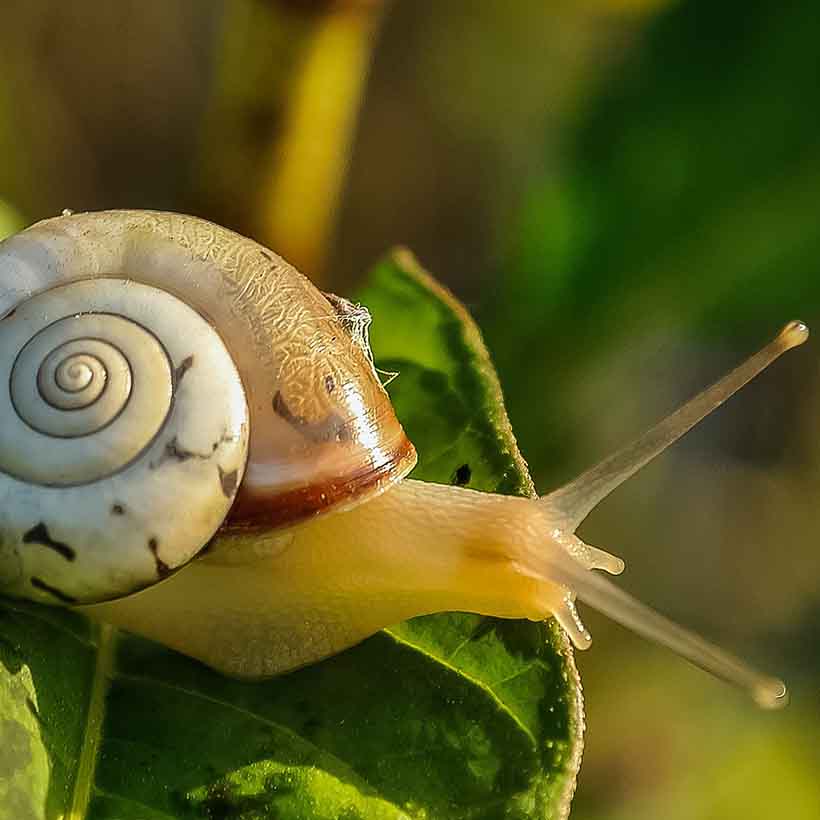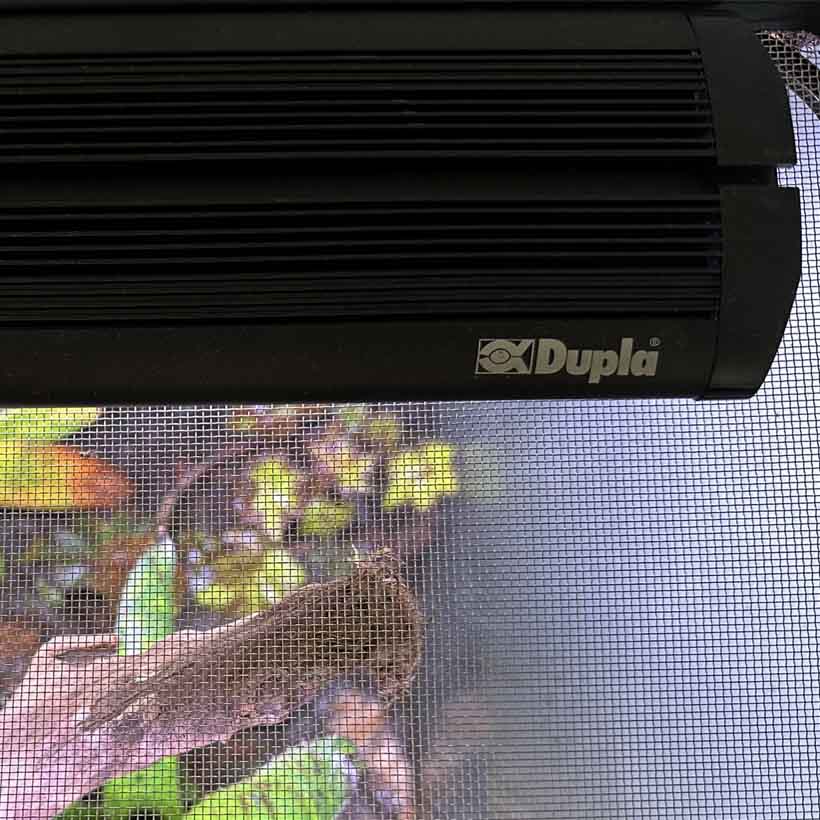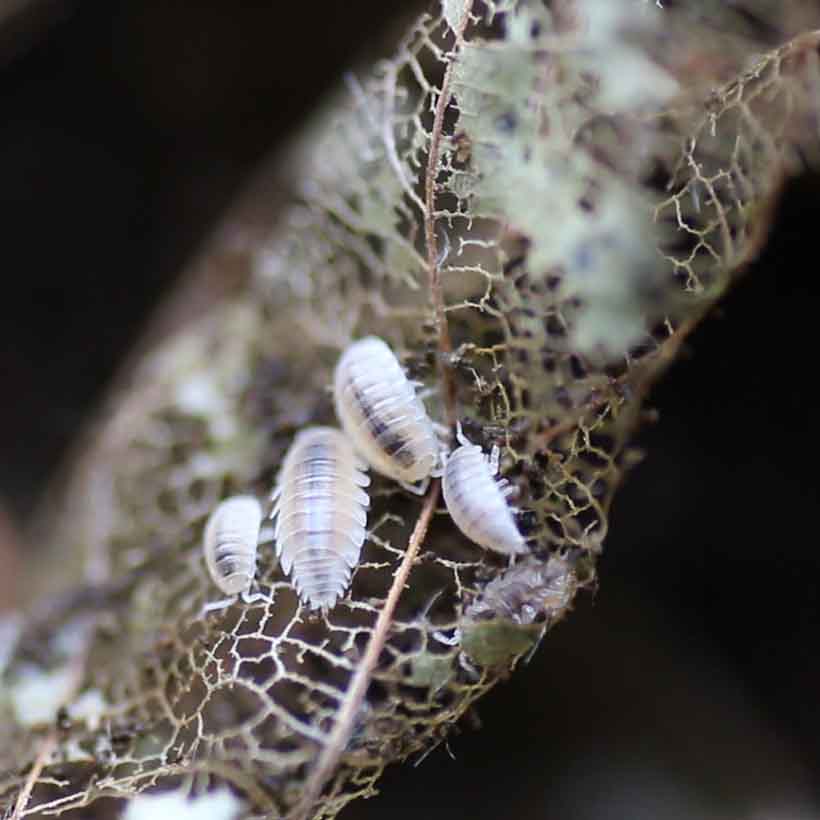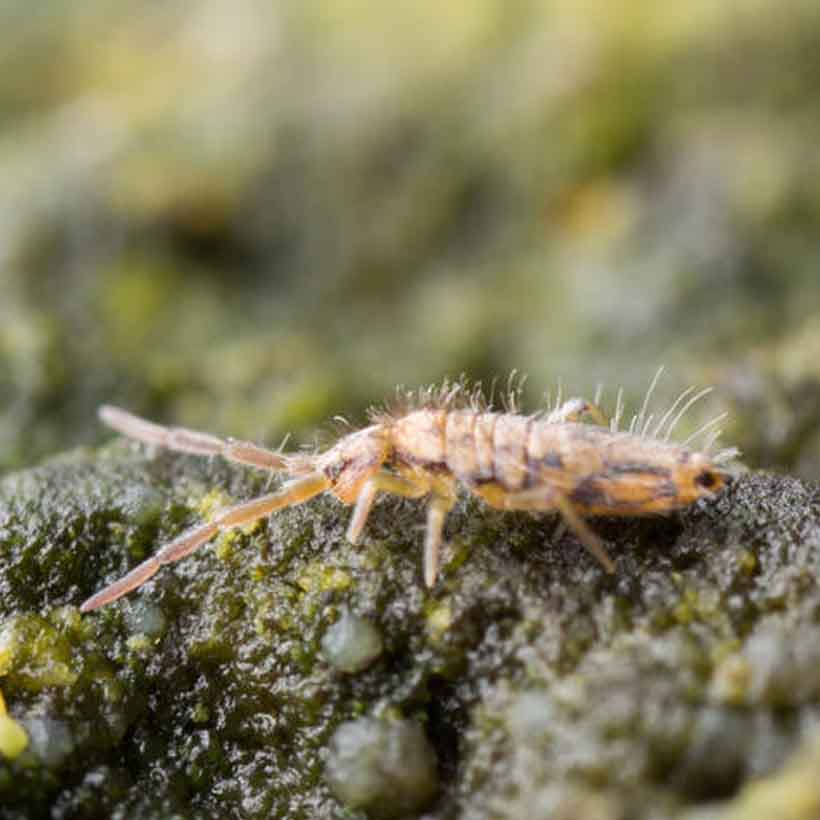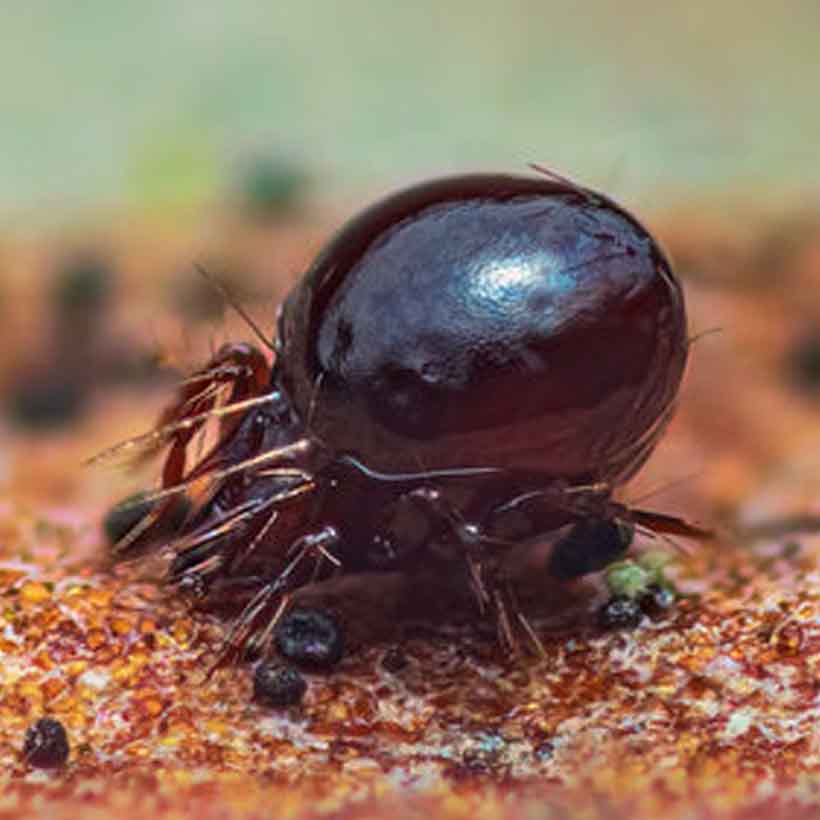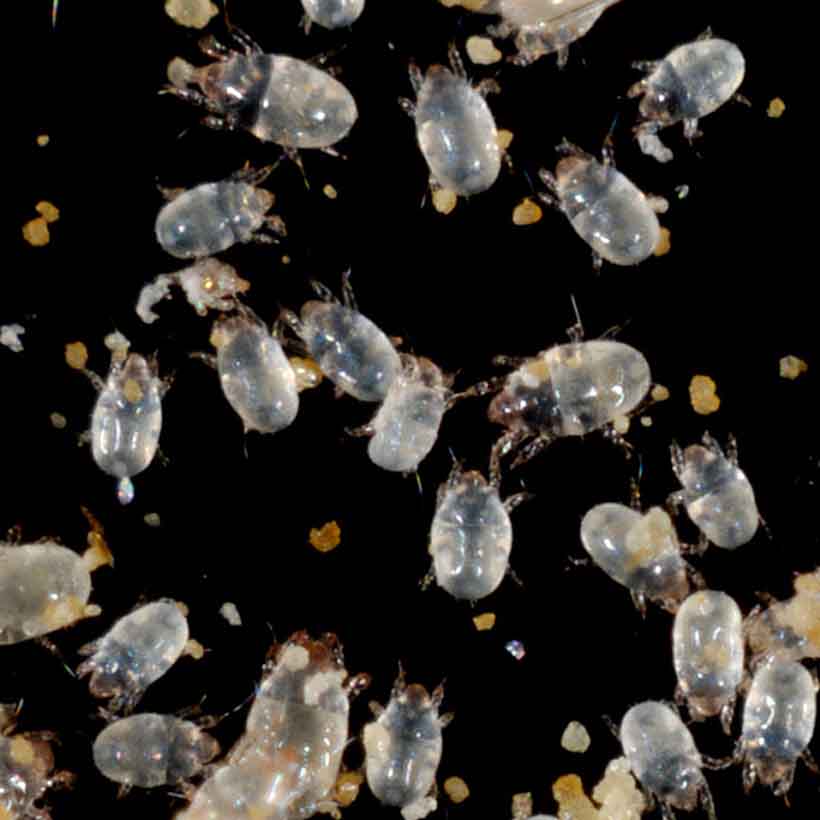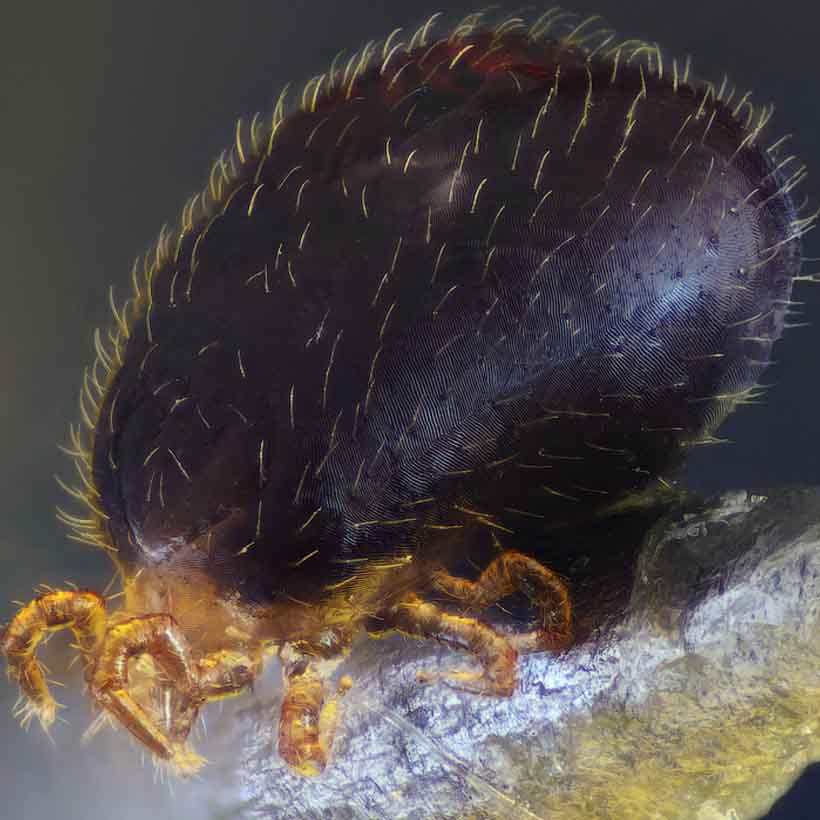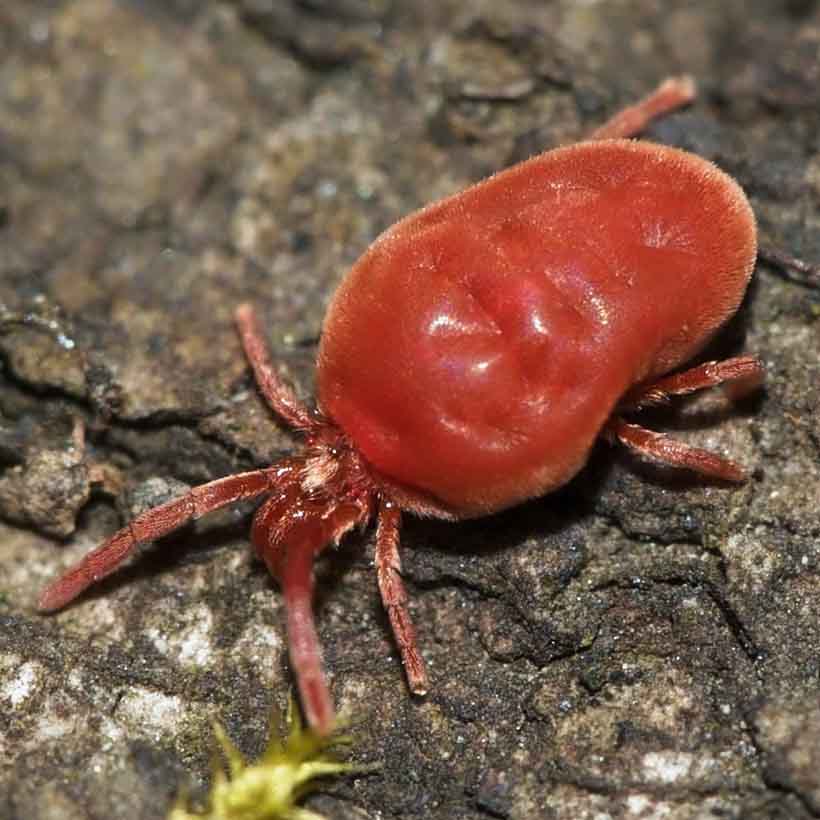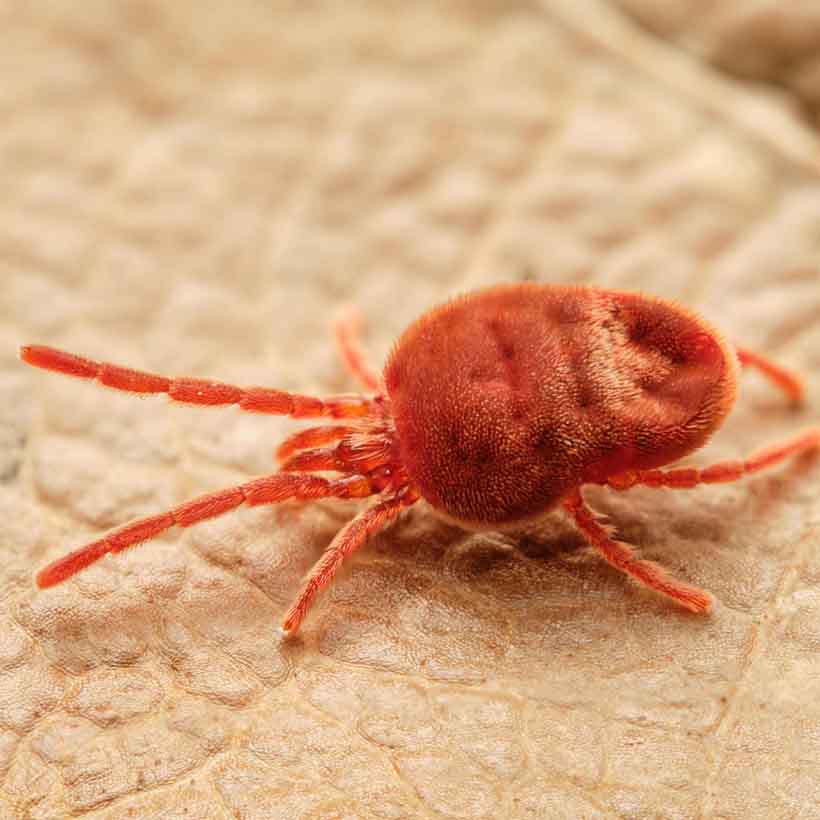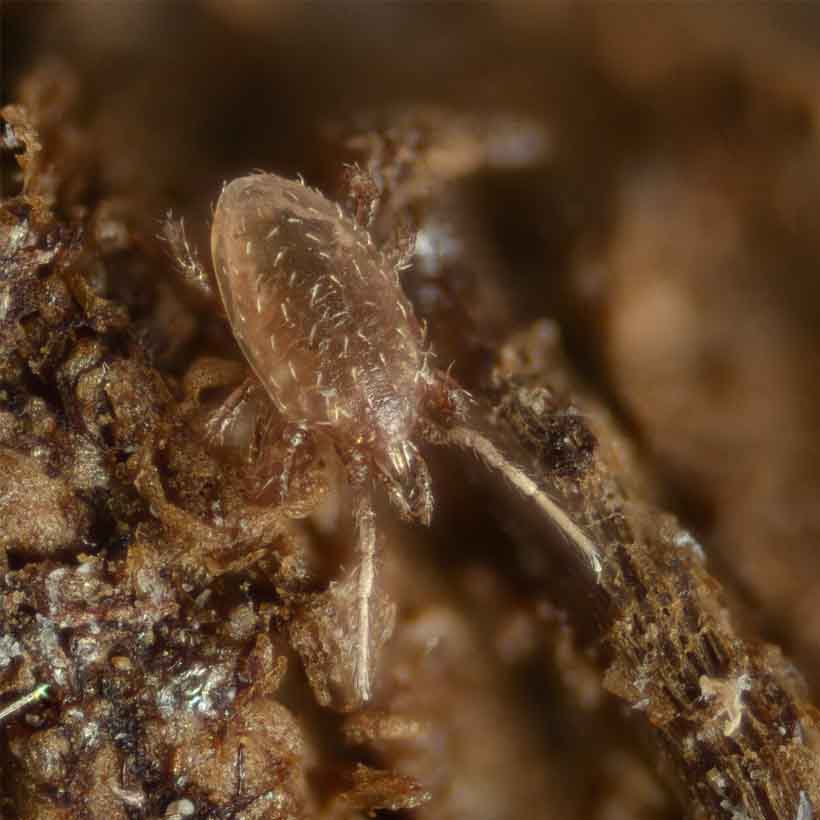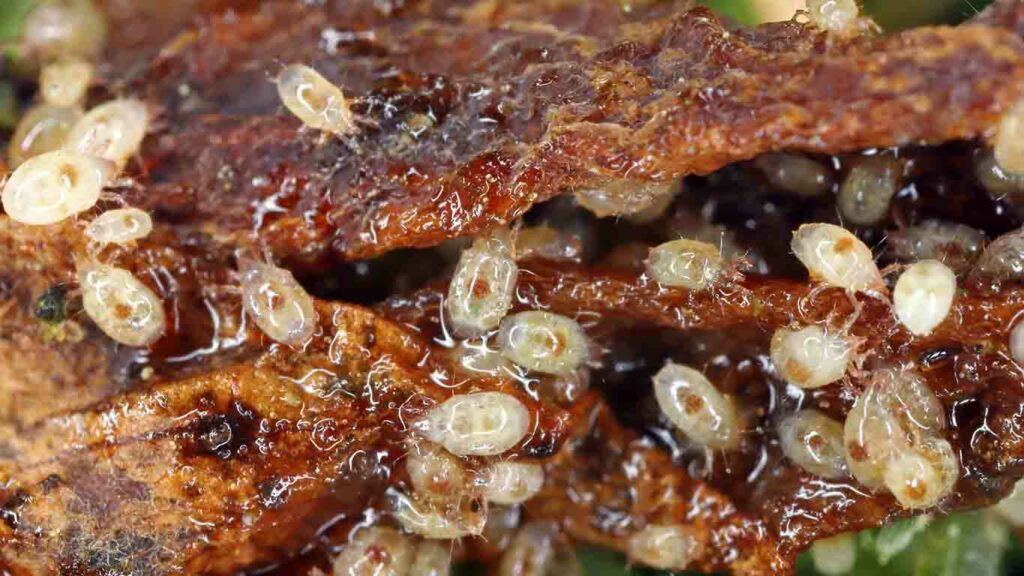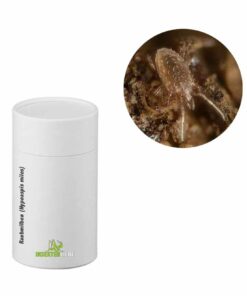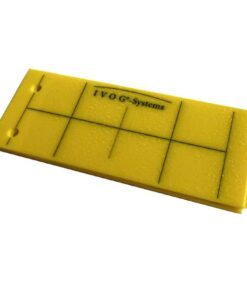Discovering mites in your terrarium is a bit like a roller coaster ride of emotions. From panic to horror to a mountain of work – we all know it all too well. The first thought is usually to immediately dispose of everything organic in the terrarium and flood the rest with disinfectant. But wait a minute, before we go completely nuts here, let’s slow down a bit and face the facts.
First of all, take a breath! Mites are annoying, but in most cases not really dangerous for our pets. So, before we clean out the whole terrarium and look forward to the next bulky waste, we should take a closer look at the problem.
First we should say goodbye to our old thoughts about mites in the terrarium. The times in which we labeled them as annoying pests are over.
Mites are undoubtedly one of the most fascinating creatures. Their function in the ecosystem is of great importance, as they decompose organic substances, for example, and thus make an important contribution to maintaining the balance in the terrarium.
Snails are known not only for their fondness of mosses, lichens and garden vegetables, but also for their unconscious relationship with tiny horn mites, which they often ingest with their food. Incredibly, most of the tiny arachnids survive the journey through the snail gut unscathed and are excreted elsewhere in the ecosystem. In this way, the mites can often continue to live undisturbed in other parts, contributing to the ecological balance. It is fascinating how every living thing in nature is connected in a unique way and how even the smallest inhabitants can play an important role in maintaining the ecosystem.
There are numerous species of mites, some of which are also beneficial to the terrarium. Nevertheless, excessive infestations can cause health problems for the inhabitants of the terrarium, especially sensitive species. It is recommended to take appropriate measures from the beginning to prevent the occurrence of mites in the terrarium.
Mites in the terrarium: Causes and Prevention
Mites prefer warm and humid conditions! At a humidity of 80-90% and temperatures between 25 and 30°C they feel very comfortable. They are mainly crepuscular and avoid bright light and UV radiation. Mites can multiply and spread quickly, especially in small or densely populated terrariums. Suboptimal hygiene, such as infrequent cleaning of the terrarium, can promote mite growth and spread. For this reason, food debris and feces should be removed regularly to prevent the spread of mites.
Additionally, it is advisable to check the ventilation of the terrarium regularly and improve it if necessary. It can happen that a lampshade or plants cover the ventilation at the terrarium and thus hinder the air circulation. In this case, you should fix the cause as soon as possible and make sure that the ventilation works sufficiently again. This is because sufficient air circulation can help prevent waterlogging in the terrarium and thus inhibit the growth and spread of mites. Special fans can also be used for this purpose. Another option is the use of beneficial insects such as springtails and white isopods. These little helpers pick up food remains and feces and turn them into nutrient-rich soil. This not only keeps the terrarium clean, but also supports the ecological balance in the terrarium.
Different types of mites
There are different types of mites, which should be considered differentiated. Not all mites are parasitic and therefore cannot cause any damage to your animals. It also doesn’t matter if the mites are sitting on the animals, as they like to use means of transport or can help clean other animals, such as Archispirostreptus gigas, in places they can’t reach themselves. So, it is important to identify the type of mites and understand whether or not they are actually a problem to the health of your animals.
Mites generally move very slowly. If there is a quick scurry in the terrarium, they are probably dust bunnies. These feed on grain and pose no threat to the terrarium. To reduce possible infestation, the humidity in the terrarium can be lowered to below 65% and food containing cereals can be avoided for a few weeks.
Another possibility are springtails. These move quickly and hop around jauntily. They can also come in different colors, but their quick movements and slender body give them away right away. Springtails are a valuable addition to any terrarium and can be left in the habitat of terrarium animals without concern.
With over 50,000 species of mites, it is unfortunately not possible for me to go into detail about every single species. However, I am happy to introduce you to the most common species:
Oribatida (No parasite)
The Oribatida are a group of mites in which most species are characterized by strong armor and a protective spherical posture. This protective posture serves to protect the animals from enemies such as predators and parasites. In addition, the spherical protective posture helps to make the animals less susceptible to desiccation, allowing them to survive in dry habitats.
The horn mite enters the terrarium mainly through leaves and other materials collected in the forest.
Indeed, horn mites feed on different parts of the plant, depending on the species. There are three different groups of horn mites in terms of their diet. The macrophytophagous species feed exclusively on large plant debris, the microphytophagous species feed on microorganisms such as algae, bacteria and fungi, and the panphytophagous species feed on mixed food as non-specialists.
Acarus siro (No parasite)
The males of the flour mite reach a size of only 0.3 to 0.4 millimeters, while the females are slightly larger with up to 0.7 millimeters. The body color of the flour mite is grayish-white and almost transparent. The flour mite occurs as a storage pest mainly in Central Europe and North America.
It can infest entire grain stores, grain silos, mills and bakeries and is one of the most common food pests worldwide.
Flour mites enter the terrarium mainly through food containing cereals. Flour mites feed on different types of cereals and do not pose an immediate danger in the terrarium. However, food supplements containing cereals should be avoided for a few weeks to prevent possible multiplication of mites in the terrarium.
Ophionyssus natricis (Parasite)
Ophionyssus natricis, also called blood mite, is a parasitic mite species from the family Macronyssidae that feeds on blood and is specifically found in reptiles. This mite species has an elongated and oval shape, ranges in size from 0.6 mm to 1.3 mm, and has a brown body. A heavy infestation of Ophionyssus natricis can lead to a weakening of the immune system of affected animals, increasing their susceptibility to other infections. In addition, the mites themselves can pose a threat to the health of the reptiles by transmitting pathogens.
To recognize an infection with Ophionyssus natricis, one should look for clinical symptoms, such as increased scratching or rubbing against objects, prolonged time spent in the water tank, and general restlessness. In advanced stages, reluctance to move, fatigue, and refusal to eat may also occur.
Trombidium holosericeum (Parasite)
Trombidium holosericeum, also known as the red velvet mite, is a parasitic mite species found in various animal species. Red velvet mite transmission to terrarium animals occurs primarily through contact with infected food animals such as crickets or grasshoppers.
The mites can develop on these hosts and enter the terrarium during feeding, where they can then also settle on the inhabitants of the terrarium.
The larvae of Trombidium holosericeum, the red velvet mite, are known to develop parasitically on various insects such as butterflies, grasshoppers and weaver’s mites. In doing so, they feed on the hemolymph (blood of the insects) of their hosts and form sac-like structures under the legs of the infected animals. After parasitization, the larvae develop into free-moving nymphs with a lifestyle similar to that of adult mites. The adult mites prefer to live on the ground and suck mainly insect eggs, but also hunt other small ground animals.
Neotrombicula autumnalis (Parasite)
Neotrombicula autumnalis are arachnids about 2 mm in size that lay their eggs in grasses. The eggs of this mite species can thus enter the terrarium by feeding on self-picked food plants. By the way, Neotrombicula autumnalis has many names, It is called autumn mite, autumn grass mite, hay mite or grass mite, although it has no relation to the plant-sucking grass mites. The names grass louse, earth louse, and peach louse are also misleading because adult autumn mites are eight-legged and are not aphids.
The larvae of Neotrombicula autumnalis parasitize as ectoparasites (live on other organisms) mainly on small mammals such as mice, hedgehogs and rabbits, but also occasionally on birds. Domestic animals such as dogs, cats and humans may also be affected by infestation.
Predatory mites as a natural and safe solution against mites in the terrarium
It is important to note that the use of pesticides or other chemical agents to control mites in the terrarium is not an option. The use of such agents can harm not only the mites in the terrarium, but also other inhabitants of the terrarium. For this reason, it is essential to find alternative methods to control mites in the terrarium. However, there are natural and safe methods to control mites in the terrarium that do not have harmful effects on other inhabitants. The best option is to use predatory mites. Predatory mites are excellent mite eaters and help to completely eliminate the mite population in the terrarium. There are several different types of predatory mites that can be considered for use in the terrarium. We chose Hypoaspis miles for several reasons:
Hypoaspis miles are slightly larger compared to Amblyseius predatory mites, measuring up to 1 mm. They also have a long life expectancy, with an average lifespan of about 7 months for males and 3-5 months for females. Hypoaspis miles can survive in a wide temperature range of 15-30°C and are also active at the surface during daylight hours.
Hypoaspis miles can survive for extended periods without food, up to 7 months in males and 9 weeks in females. Even if the eggs of the mite species you want to control have a long incubation period, the use of the Hypoaspis miles predatory mite will eliminate them. In addition, Hypoaspis miles can also be used against fungus gnat larvae in the terrarium.
Hypoaspis miles are excellent hunters and beneficial insects in the terrarium, as they are able to fight all larval stages of fungus gnats. They attack not only the visible larvae, but also those that are in cracks and crevices or in the hiding place of the terrarium furnishings. In doing so, they search the entire terrarium in search of prey and eat the fungus gnat larvae before they can develop into pupae. However, it is important to note that Hypoaspis miles do not attack pupae and thus are unable to control fungus gnats that have already hatched. For this reason, additional yellow panels should be placed to capture adult fungus gnats to reduce the population.
Hypoaspis miles can also hunt springtails as prey, but these are more difficult to capture due to their speed and defensiveness. Hypoaspis do not pose a threat to larger species such as white isopods, as the young isopods are already too large for the predatory mites.
16,90 € Incl. VAT plus shipping
9,49 € Incl. VAT plus shipping
We know how worrisome it can be to discover mites in your terrarium. By taking various measures such as reducing humidity, not using grain as food, and using beneficial beneficial insects such as springtails and especially predatory mites, you can effectively control the mite population in the terrarium.
Overall, it is advisable to carry out regular checks of the terrarium to enable early detection of mite infestations and to be able to act quickly if necessary. With the right measures and tools, it is possible to successfully control mites in the terrarium and keep the terrarium in a healthy condition permanently.
If there are any further questions, feel free to ask them below the article in the comments.
